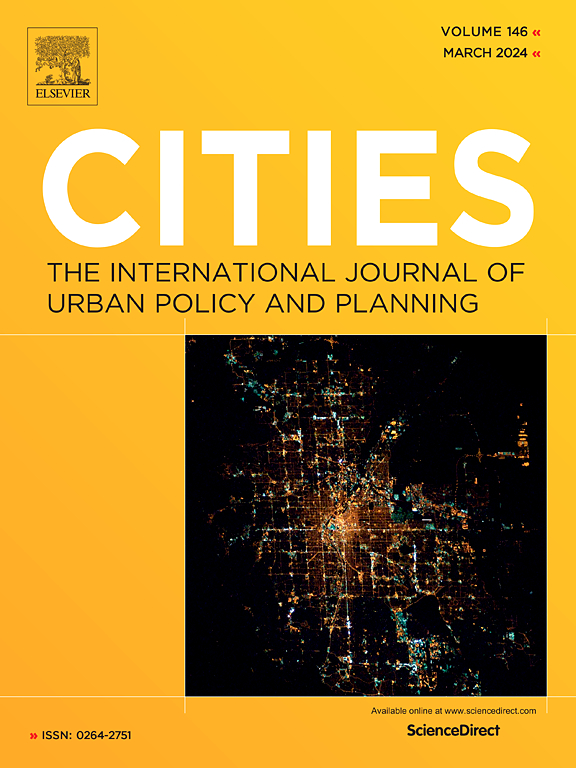在建筑环境生命阶段促进气候变化行动——来自建筑环境专业人士的观点
IF 6.6
1区 经济学
Q1 URBAN STUDIES
引用次数: 0
摘要
建筑环境没有采取充分应对气候变化所需的行动规模——到2050年实现零净排放,将升温限制在1.5°C以内。本文旨在比较和综合地了解不同部门在建筑环境生命阶段(从“变化启动”到“更新/恢复和退役”)如何经历气候变化行动(减缓和适应)的障碍和促进因素。深入采访了111位澳大利亚建筑环境专业人士,他们来自五个专业领域,包括:城市规划、建筑、景观建筑、城市设计和可持续发展。这些访谈为专业实践提供了详细的见解。所有部门确定的气候变化行动的最大障碍是在“成本和批准”阶段,在这个阶段,经济节约/利润优先于气候变化倡议。建筑师和城市设计师确定了在生命的最后阶段采取行动的最大机会。对于其他行业的专业人士来说,最大的机会是在“变革启动”阶段。所有部门的专业人员最常发现的阻碍气候变化行动的障碍是被认为缺乏影响力。结果表明,要实现气候变化行动,需要在建筑环境生命阶段和专业部门采取综合方法应对气候变化。建设建筑环境专业人员的机构和能力以促进气候变化行动至关重要。确定了建筑环境生命阶段气候行动的16个优先事项。这些措施包括将必要的气候行动纳入各个生命阶段的监管。本文为推进城市气候行动提供了新的见解。本文章由计算机程序翻译,如有差异,请以英文原文为准。

Facilitating climate change action across built environment life stages – perspectives from built environment professionals
Built environments are not implementing the scale of action needed to adequately address climate change – zero net emissions by 2050 to limit warming to 1.5 °C. This paper aims to provide a comparative and integrated understanding of how different sectors experience barriers and facilitators of climate change action (mitigation and adaptation) across built environment life stages: from ‘change initiation’, through to ‘renewal/recovery and decommission.’ In-depth interviews were conducted with 111 Australian built environment professionals working across five professional sectors including: urban planning, architecture, landscape architecture, urban design, and sustainability. The interviews provide detailed insights into professional practice. The greatest barriers to climate change action identified across all sectors were at the ‘costing and approvals’ stage where economic savings/profit were prioritised over climate change initiatives. Architects and urban designers identified greatest opportunity for action in the final life stages. For professionals from other sectors, greatest opportunity was identified in the ‘change initiation’ stage. The most frequently identified barrier to climate change action across professionals from all sectors was perceived lack of influence. Results indicate that to achieve the required climate change action, an integrated approach to tackling climate change across built environment life stages and professional sectors is needed. Building the agency and capacity of built environment professionals to facilitate climate change action is critical. Sixteen priorities for climate action across built environment life stages are identified. These include embedding required climate actions into regulation across life stages. The paper provides new insights to progress climate action in cities.
求助全文
通过发布文献求助,成功后即可免费获取论文全文。
去求助
来源期刊

Cities
URBAN STUDIES-
CiteScore
11.20
自引率
9.00%
发文量
517
期刊介绍:
Cities offers a comprehensive range of articles on all aspects of urban policy. It provides an international and interdisciplinary platform for the exchange of ideas and information between urban planners and policy makers from national and local government, non-government organizations, academia and consultancy. The primary aims of the journal are to analyse and assess past and present urban development and management as a reflection of effective, ineffective and non-existent planning policies; and the promotion of the implementation of appropriate urban policies in both the developed and the developing world.
 求助内容:
求助内容: 应助结果提醒方式:
应助结果提醒方式:


